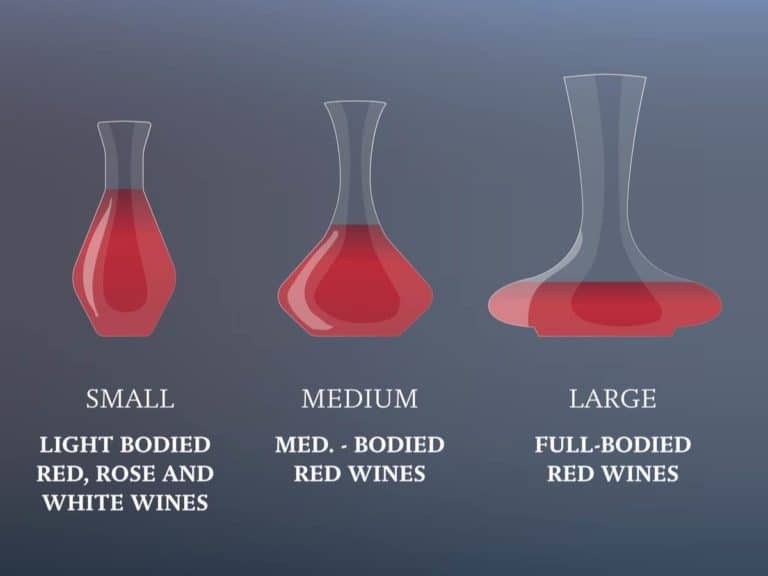Coffee With Milk vs Coffee With Water
Only instant coffee granules will fully dissolve in water. Meanwhile, only about 30% of ground coffee beans will dissolve in water. Either way, to come up with a serving of your favorite beverage, dissolving coffee is fundamental. And now, you might be wondering if other liquids may be used in exchange for water, such as milk.
It’s possible to make coffee with milk instead of water. While this causes the resulting brew to have a richer and smoother texture, it tends to be less strong. It’s also important to make coffee with milk correctly. Otherwise, one could end up with a chunky beverage and a damaged coffee maker.
Many coffee lovers add milk to their coffee to enhance the texture and reduce bitterness.
And then there are also those that make their coffee with milk instead of water, thus eliminating the need to add the dairy product just before they start sipping away.

Why Do People Make Coffee With Milk?
Some people prefer to make coffee with milk because the sugars naturally occurring in milk reduce the bitterness of coffee. Brewing coffee grounds with milk rather than water also results in a richer and thicker beverage that’s less acidic, which is made possible by the thick fats present in milk.
According to a survey, almost 90% of participating coffee lovers said that they regularly drink coffee with milk. The majority of them are people younger than 18 years old.
There is adding milk to coffee, and there is brewing milk with coffee.
It goes without saying that the latter is like coffee with milk on steroids — it’s simply so much more velvety and creamier. Those who do so like to enjoy the resulting brew either piping hot or with ice if cold-brewing coffee grounds with milk — we will talk about this in a few, so don’t stop reading now!
But what many people who make coffee with milk don’t do, especially those who learned from experience or researched a lot beforehand, is use their coffee maker when brewing coffee grounds with milk.
Coffee makers are designed to accommodate water, not other liquids, especially viscous ones such as milk. The goal is to keep these must-have kitchen appliances for absolute coffee fanatics from ending up clogged. Milk can easily damage coffee makers not only because it is thick but also because it can easily curdle and burn, causing an obstruction.
It’s for this reason why coffee maker manufacturers recommend the use of distilled water as it’s mineral-free.
Needless to say, if you wish to give brewing coffee grounds with milk a try, leave your trusted coffee maker alone. The best tool for the job is either a French press or a pour-over.
What is the Best Way to Make Coffee With Milk?
The best way to make coffee with milk is to heat milk slowly, stirring constantly to keep it from burning and curdling. To deal with an under-extracted drink, one can use more coffee grounds or brew coffee grounds with less hot milk. Instant coffee may be used instead as it dissolves better in milk.
Brewing coffee with milk results in a beverage with a different taste and texture from coffee brewed using water.
Similarly, making coffee with milk is different from making coffee using water. This is especially true when it comes to the temperature at which you brew coffee. Unlike water, milk burns. It curdles, too, when exposed to high temperatures, which can cause the resulting drink to have a lumpy rather than a smooth and rich texture.
Coffee experts say that, when brewing coffee, the water should be between 195°F and 205°F (90.6°C and 96.1°C). Failure to use water at the right temperature can result in either:
- Coffee with a burnt taste if the temperature is higher
- Coffee that’s under-extracted if the temperature is lower
This is when a problem arises when making coffee with milk.
You see, milk starts to burn at 170°F (76.7°C). Brewing coffee with milk at a lower temperature will taste bland. Meanwhile, brewing coffee with milk at a higher temperature will taste burnt. But fret not if you would like to make coffee with milk as there are a few workarounds:
- Heat milk in a saucepan on low, constantly stirring
- Heat milk in the microwave, pausing to stir it every 20 to 30 seconds
- Allow to brew longer, reheating it in the microwave afterward as necessary
- Use more coffee grounds, although this will cause an increase in caffeine content
- Use decaffeinated coffee to keep too much caffeine at bay
- Use instant coffee, which doesn’t take a lot of heat to dissolve completely
Related Article: Why Does Lactose-Free Milk Taste Sweet
Cold-Brewing Coffee With Milk
Cold-brew coffee with milk, as the name suggests, is coffee that’s cold-brewed with milk rather than the usual water. Cold-brew coffee, whether with water or milk, is a popular summer beverage among many coffee enthusiasts. Cold-brew coffee with milk can be enjoyed as is, with ice or even warmed up.
Traditionally, coffee is cold-brewed by steeping coarsely ground coffee beans in water for up to 24 hours.
It is then served, most of the time, poured over ice. However, some people like to enjoy theirs warmed up. No matter the case, one thing remains true: cold-brewing coffee allows you to enjoy coffee in a whole new different way. Many agree that cold-brewing coffee results in a tastier beverage.
Because of this, many consider cold-brew coffee as healthier than coffee prepared in the customary way. It’s for the fact that the resulting brew is flavorful enough that sugar, cream and other calorie-packed add-ons are no longer essential.
You will feel less guilty drinking cold-brew coffee if you are watching either your weight or health or both.
If a more unforgettable coffee-drinking experience is the priority, give cold-brewing coffee with milk a try. The steps to making this velvety beverage are as follows:
- Grind coffee beans. As a general rule of thumb, you should ground your beans coarsely. Otherwise, you may have difficulty straining coffee and also end up with an over-extracted brew that tastes bitter.
- Combine ground coffee beans and milk. In a mason jar, pour half your milk. Add coarsely ground coffee and pour remaining milk. Stir using a spoon with a long handle. The general consensus when cold-brewing coffee is that you should use one part coffee for every five parts water — or five parts milk for this recipe.
- Allow to brew. When cold-brewing coffee the traditional way, you can leave the mixture at room temperature for up to 24 hours, although between eight and ten hours is oftentimes enough. But since milk can easily spoil at room temperature, the brew should be placed in the refrigerator until you are ready to take the last step.
- Filter coffee grounds. Last but not least, you should remove the grounds from the milk. What many people do is put coffee filter paper in a small sieve and place it over a mug, and pour cold-brew coffee into the sieve.
Cold-brewing coffee with milk is this easy, although it’s not the most time-saving way to prepare a delightful drink. Here’s an idea: give cold-brew coffee using water a try, too, and see which between the two variants you will like better.
Just Before You Use Milk for Making Coffee
Making coffee with milk can change the way you enjoy coffee. Do it the right way, and you are sure to have a rich and thick uplifting beverage. Do it the wrong way, and you could end up with a lump-filled and burn-tasting drink — and a damaged coffee maker if you use yours for the job.
Related Questions
Is it healthier to drink coffee black or with milk?
For people with acid reflux, coffee with milk is better. Milk can neutralize acid in coffee, thus keeping heartburn and other acid reflux symptoms at bay. Nutrition-wise, coffee with milk is healthier because milk, like other dairy products, is one of the most nutrient-dense foods on the planet.
Why shouldn’t you eat meat while drinking coffee?
Meat is a good source of zinc, a mineral whose roles include boosting the immune system, promoting cellular division and breaking down certain nutrients. Coffee contains phytic acid, which can prevent the body from properly absorbing zinc and other important minerals, including calcium and iron.





